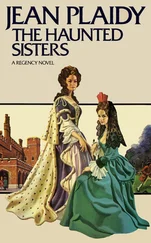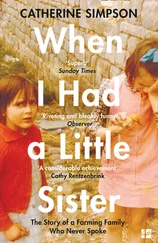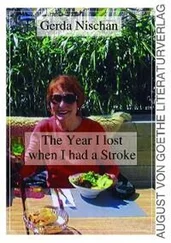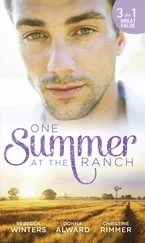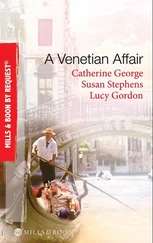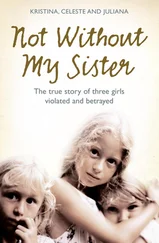The dash south on the day Tricia died was an echo of a similar journey when my mother was on her deathbed seven years before. After hearing she’d taken a turn for the worse there had been the frantic packing of a suitcase followed by the same three-hour hiatus on the M6, but as familiar sights flew by – the bleak stretches over Shap, the promise of Tebay Services, the elegant verdigris dome of the Williamson Memorial – the familiarity was overridden by a surreal feeling of travelling into the unknown and the knowledge that everything in the world had changed.
I was raised in a family of five. Mum’s death had taken that to four; now we were down to three.
Mum had died in the scorching summer of 2006, six years after being diagnosed with non-Hodgkin’s lymphoma. Her final years were a white-knuckle ride of scans, hospital appointments, inpatient, outpatient, chemotherapy, sickness and terror – hers and ours – with short reprieves when we dared to hope it was all behind us and that we’d be able to re-close our eyes and our ears to death and pretend it hadn’t come so close we could smell it.
We buried her in the outfit she’d worn for a Buckingham Palace garden party she’d been invited to through Dad’s work with the Royal Lancashire Show: a silky blue dress bought from a boutique rather than a catalogue or being home-made which would have been more typical. I took her perfume, her glasses and her handbag to the undertaker’s. I put an ironed lace handkerchief inside her handbag. I took her lipstick and her face powder.
I drew the line at her fascinator.
I put everything in a carrier bag because I had seen someone else leave clothes at the undertaker’s and their underwear and skirt and blouse were left exposed, draped over the back of a chair in the waiting room. I could only imagine my mother’s tight-lipped, you-can’t-trust-anyone-to-do-anything eye-roll if her underskirt and tights were left draped for all the world to see .
Her five grandchildren wrote notes to put in the handbag and did drawings. They wanted to because they loved her. She had never complained when they turned her house into an obstacle course or her entire living room into a den. Unlike when we were kids and she had berated us for making a mess, yelling, ‘When you’re grown up I’m going to come and jump on your settee and see how you like it!’ It always looked as though she enjoyed being a grandma more than a mother.
The day after she died we tried to impose some order on her chaotic kitchen – sorting out, putting away, making space to put stuff down – things we were not allowed to do when she was alive. We’d been embarrassed the evening before when the nurses arrived with the morphine and couldn’t find anywhere to assemble the morphine driver. They’d looked at us, questioning, disapproving, maybe thinking we’d created this mess and obviously wondering why we didn’t sort the place out. Elizabeth and I had kept quiet, aware how ridiculous it would sound for two middle-aged daughters of a dying woman to gaze helplessly round the chaos and say: ‘But we’re not allowed!’
I found her platinum wedding ring in the bottom of a jug in the kitchen. It had worn smooth and thin since her wedding forty-seven years earlier and was cut and misshapen – she must have severed it with wire cutters or pliers to remove it from her left hand when her finger swelled with the cancer treatment or her skin became too sensitive for jewellery.
Dad and Elizabeth said she must be buried with the ring so I took it to the undertaker’s even though I wanted to keep it. I wanted to repair it, to make it into a complete circle again and to wear it. I did not want it forever lost underground.
She did not have an engagement ring to bury because she was the only woman I ever knew who rejected a diamond ring as nothing but a nuisance. She thought engagements were meaningless. You are either married or you are not married – what is engage d ? My mother could infuse a single word with such contempt.
I visited Mum several times in the days leading up to her funeral. I accompanied my nephews and my father to the viewing room to make sure everything had been done right; that the wedding ring had been placed on the third finger of her left hand and the handwritten notes and her glasses and lipstick were in her handbag which nestled beside her in the coffin.
As I checked the grandchildren’s notes I slipped my fingers into the silken pocket inside her handbag and found, sunk and hidden at the bottom, a thick gold chain and engraved locket that once belonged to my great-grandmother. I drew it out. My mother did not like sharing. Even though she found jewellery cumbersome and irritating she didn’t want anyone else to have it. Maybe it was growing up as the oldest of eight siblings during the Second World War. When she died she would have taken everything with her if she could. I held the chain up and the locket swung and spun and I felt a fleeting, incongruous moment of triumph. ‘You nearly got away with that one,’ I said and I fastened the chain around my neck.
Later, as I went through her jewellery box, I again felt that reversal of power; I was here and she was not. Her things had been out of bounds when she was alive but now they were not. As children we had longed to sit at her dressing table and try on her beads and gold chains and rub scent on our wrists.
Now all these treasures were ours. There was no one’s permission to ask.
I examined her dressing table, half-expecting to hear: ‘Stop rooting! I’ve got eyes in the back of my head, you know!’ I discovered the perfume was congealed and most of the jewellery was broken. I got her pearls restrung but I never wore them. I saw on the television that you can tell real pearls by rubbing them against your teeth. If you feel tiny bumps they are real, if not they are fake. I went to the jewellery box and took out the pearls and tested them. My mother’s pearls were fake.
I was reminded of when we were children and the biggest bedroom was out of bounds because the roof leaked. It was full of stacks of material, wool and haberdashery, with the odd bucket to catch the drips. When Mum went shopping we sneaked into this room to root among the treasures. We discovered a doll still in her packaging behind moulded plastic; staring eyes, solid hair, her own little kitchen sink behind the plastic too. How we longed to play with this doll but we could not mention it without admitting we’d been where we shouldn’t. Over the years as we visited the doll the plastic packaging got grubbier and more opaque as her staring eyes disappeared behind the dirt. Then one day Mum brought the doll out but by this time we were too old for it. When we took it from its plastic we discovered the doll was so cheap she didn’t even bend at the hips. We threw both her and her kitchen sink in the bin.
My mother had particular hands – hands I would recognize anywhere, with flat almond-shaped nails always cut short. Several days after her death her fingers had gone a creamy pale blue but they were still recognizably, uniquely hers. I touched them and they were deathly cold. It took me a visit or two to realize that the chill was caused by her body being refrigerated in between because, in fact, death is room temperature.
I photographed her hands.
Weeks later I was flicking through the photographs on my camera and unwittingly came face to face with the close-up of my mother’s mottled hands. I was shaken and a bit embarrassed. What would people say if they knew I was keeping a picture of my mother’s dead hands?
I studied the photo and noticed the exact shape of her fingernails, the way her wedding ring had worn a smooth groove in the flesh of her finger before she’d cut the ring off, and I noticed the knobs of arthritis in her thumb joints as her hands rested against the blue silk pattern on her dress.
Читать дальше

